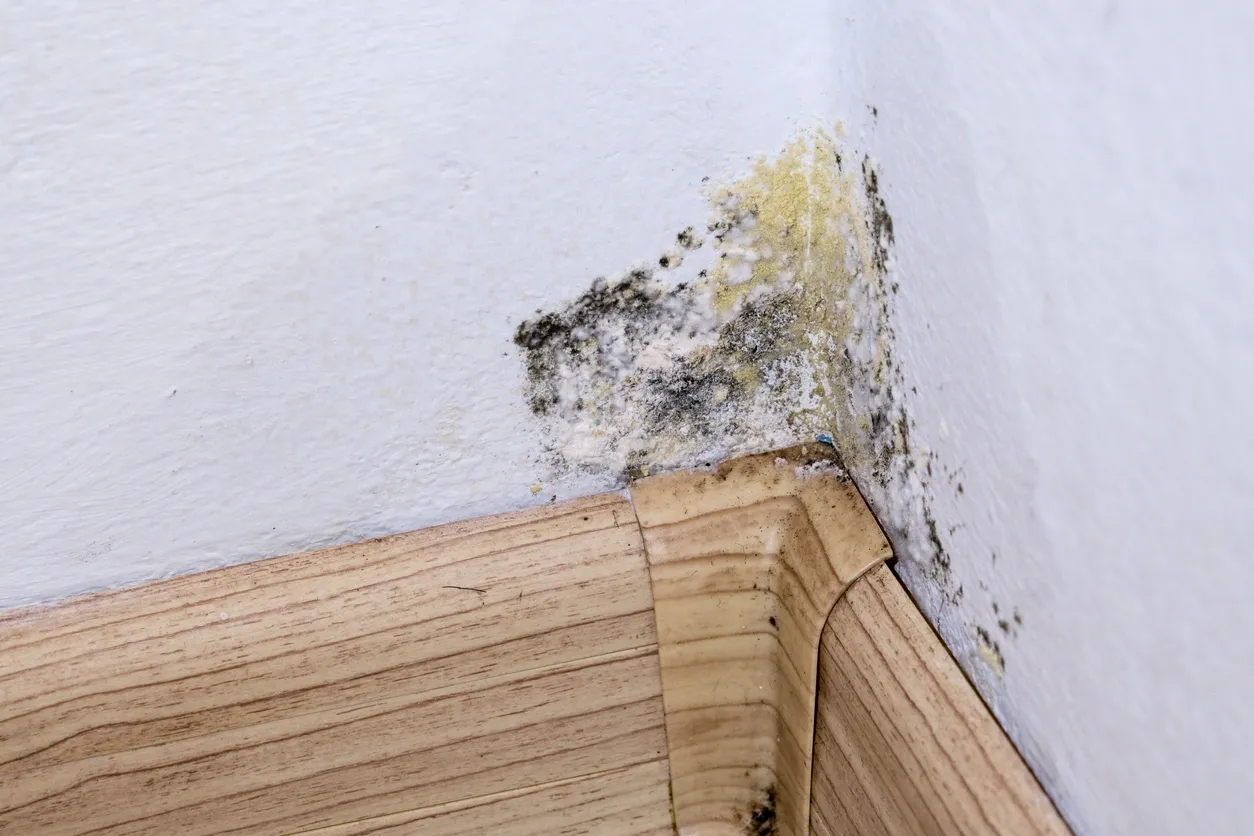Let’s Talk About Mold
Mold illness is quite common but often misdiagnosed. When a patient presents with mold toxicity symptoms, it can often look like a wide variety of other chronic conditions. Because most doctors have very little experience with mold illness, they rarely consider it when ruling out conditions for their sick patients. If left untreated, mold illness can become chronic, even when the patient escapes the moldy environment. Severe mold toxicity can also be deadly.
Mold can occur anywhere and can grow on any surface where moisture is present. The most common sources of mold are in bathrooms, laundry rooms, food, and within HVAC vents. Humidity levels of 55% or more are the perfect environment for mold spores to proliferate. It can also be found in fresh foods, not just aging produce. Peanuts and coffee beans are known to have a low level of mold from their natural growing environments. While this doesn’t typically pose a problem for most people, if you know you have a sensitivity to mold, these foods may be triggers for symptoms. Mold in homes can often be hidden behind furniture or behind drywall, so oftentimes people will not notice the problem until the person begins to feel unwell.
What are the symptoms of mold illness? Most symptoms are not actually caused by the actual mold itself, but by mycotoxins, the toxic by-products produced by the fungi. These are some of the most toxic substances on the planet and can remain toxic for years, even in severe heat and cold. Humans are exposed to these toxins when they breathe or ingest food containing the mycotoxins. Symptoms include but are not limited to:
- Cold or flu like symptoms
- Coughing
- Sneezing
- Sore throat
- Ear Pain/Infection
- Irritated, itchy throat
- Blocked nose
- Itchy nose
- Runny nose
- Sinus congestion
- Sinus headaches
- Difficulty breathing, shortness of breath
- Wheezing
- Irritated, itchy skin
- Skin rash, hives
- Watery eyes
- Red, bloodshot eyes
- Itchy eyes
- Itchy ears
- Hair loss
- Hay fever symptoms
Severe symptoms from chronic exposure can include respiratory infections, internal bleeding, cancer, organ failure, mental impairment and death. Many mold patients have described feeling like they cant control their emotions and experience severe mood swings and uncontrollable behaviors.
Everyone has a different threshold to the exposure levels of mold/mycotoxins they can handle before feeling unwell. Some people are genetically susceptible to mold illness in even small exposures while others can live for years in a moldy environment without symptoms. People with compromised immune systems, young children, and the elderly are more prone to mold illness.
What are the options for treatment/prevention?
100% prevention is impossible for most people. The best ways to avoid mold growth in the home are to keep the home as dry as possible. Run fans before, during and for a few hours after showering, doing laundry and any other activity that requires water use. Replace the filters in your air vents as often as possible, even monthly to prevent the growth of mold on the filters which can then spread the spores throughout the home. Don’t leave produce out where is can quickly become moldy; keeping all produce in the fridge, especially during summer months can keep the food fresh longer, but also prevent mold growth. Replace carpet with hardwood, tile or vinyl flooring to prevent hidden mold growth deep in carpet padding and subflooring.
If you find a mold problem in your home, do not touch it. There are many over the counter testing kits you can purchase to find out what kind of mold it is. You can also call in a mold specialist to run the test and do any needed remediation. Ozone generators are a common tool used to kill mold spores. While it may work in mild to moderate infestations, the machine creates a very toxic substance so the home needs to be vacated while it runs. Depending on the severity of the exposure, sometimes a home has to be abandoned completely, including everything in the home. Many families have had to restart their lives after mold exactly the same as if the home had burned down.
Mold is not to be taken lightly. If you have started feeling unwell in your own home, you may want to look on walls, under carpets and behind furniture for mold before chalking it up to just allergies.
Treating mold illness can take years and many specialists. The first step is always eliminating the exposure. Next, your doctor will likely run labwork to find out what havoc the mold has created within the nutritional pathways in the body so they can be corrected. You’ll also have to detox the mycotoxins. There are many detox routes including herbal regimens, sauna, hyperbaric therapy, massage therapy and others. Detoxing mycotoxins can be uncomfortable so make sure you stay hydrated and take supplemental binders your doctor recommends. Next, your doctor is going to want to treat any infections or gut issues that stemmed from the mold. This can be a life-long journey back to recovery so make sure you are under the guidance of a professional.
Here at 123HBOT, we have seen many clients recovering from mold illness. Many of them have said that hyperbarics along with their other modalities saved their lives.
To learn more about everything mold related, check out: https://moldpedia.com

